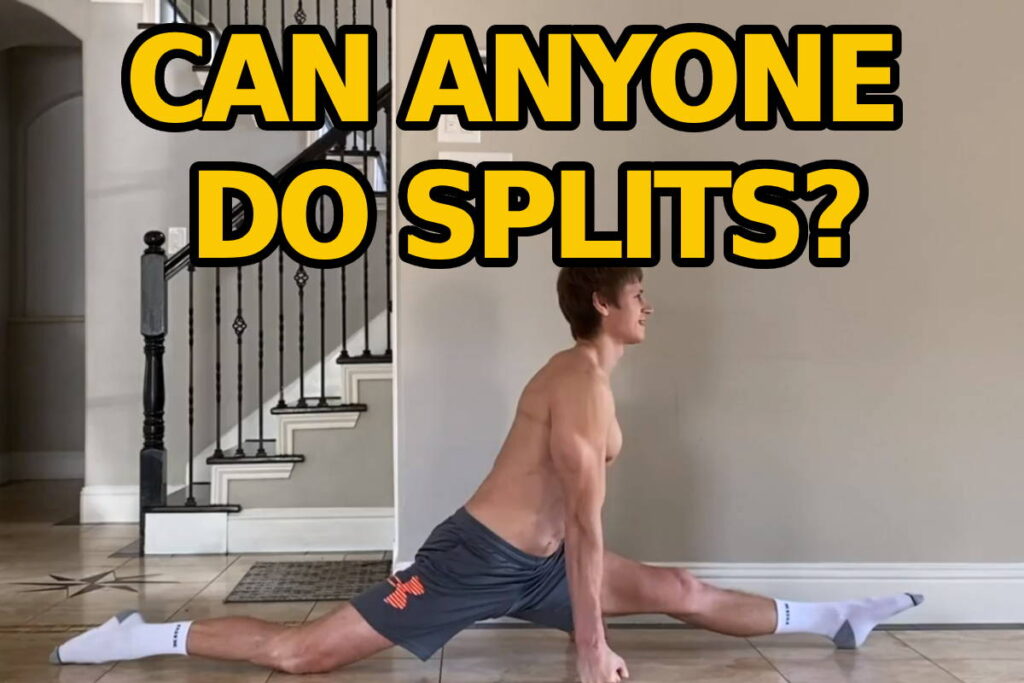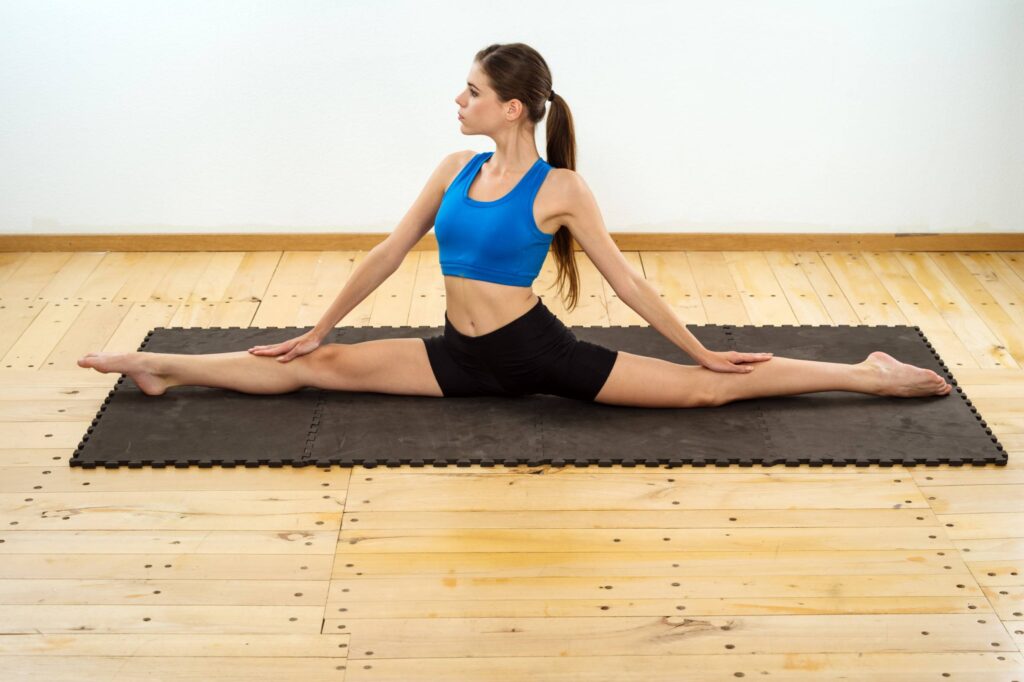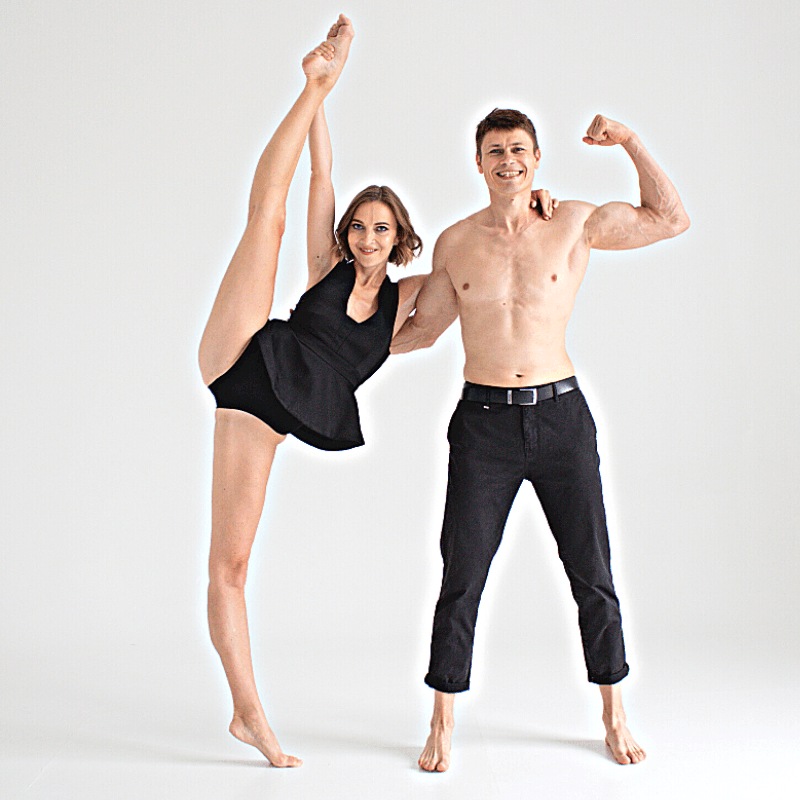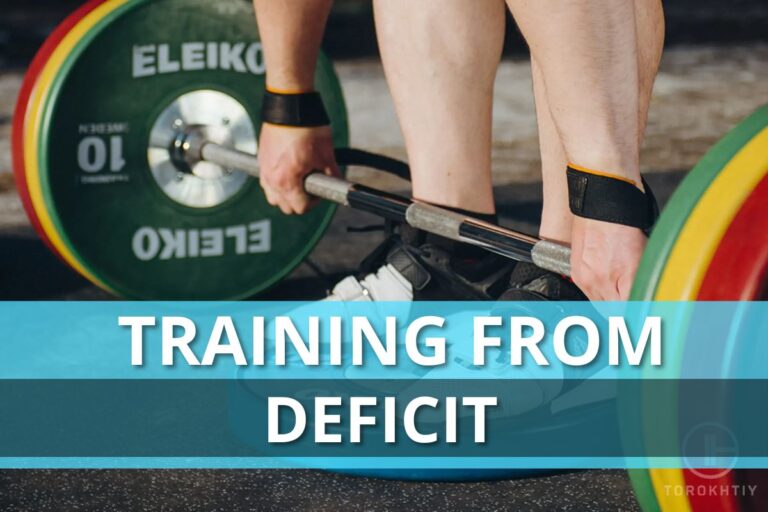Can Anyone Do Splits? Journey From Zero to Splits [Asking Cirque du Soleil Artist]
Being able to do a split is no doubt a milestone in increasing your body’s flexibility. And as it should be, it takes weeks, sometimes even months, of training to achieve this milestone. The required time depends on several factors, including how often you train and your body’s natural flexibility. But can anyone do the splits? And is there any age limit to learning splits?
Can anyone do the splits? Anyone can learn a split unless they’ve a medical condition that refrains them from doing stretches. Even if your body isn’t flexible enough, you can do splits by following a routine. You can even start learning splits after 30 by gradually increasing your flexibility.
This article will help you dive deeper and learn some warm-up stretches and how to get a perfect split. If you still need more time, we also have a test with which you can know whether you can do splits.

- Who Can’t Do Splits And Why?
- What Factors Affect a Person’s Ability To Do The Splits?
- Simple Side Split Test
- 🔔Learn How to Split in 21 Days!
Who Can’t Do Splits And Why?
With daily practice and consistency, you can do splits. But can anyone learn to do the splits even if they have some medical con condition? No! If you recently underwent surgery or have a problem such as hip dysplasia or osteopenia, you should refrain from attempting to practice splits. You shouldn’t start doing splits without a proper warm-up.
1. People With Hip Dysplasia
If you have hip dysplasia, you should avoid any impact sports. The same goes for splits. In this condition, the hip joint is too shallow.
Due to that, stretching can result in dislocation of the joint. So you should avoid any kind of extreme stretching or splitting if you have hip dysplasia.
2. People With Recent Surgery Or Medical Procedure
Do not attempt to do splits if you’ve had a recent surgery. In such conditions, the doctors also advise avoiding extreme physical activity.
Doing splits after a recent surgery might result in serious injury to the wound. So, ensure you’ve fully recovered before training your body for splits.
3. People Lacking Warm-ups and Proper Training
Do not rush! Whenever you start something new, it’s natural to want to speed up the process so you can become a pro at it in no time. But, if you try to hurry and avoid proper warm-ups every time, this can cause serious muscle damage or tear.
Remember! Pain is your body’s way of telling you you are being too harsh. If doing a stretch hurts badly, it is a sign that you are not doing proper warm-ups.
4. People With Osteopenia
The chances of fracture are much higher in people with osteopenia. This is because they have less bone density. This results in weaker bones.
So, you should avoid attempting splits because they involve extreme bending and stretching. You should go for light exercises for flexibility instead.

Splits At Different Ages
Your bones and level of flexibility are different at different ages. That’s why there’s a slight difference in training for splits at different ages.
1. Age 5 to 12 (Kids)
At this, you should mainly focus on the body’s general flexibility. Go for exercise that involves flexible body movements. Avoid staying in the same stretched static condition for more extended periods. You should also avoid excessive pressure on the body that causes pain or discomfort.
2. Age 13 to 40 (Adults)
If you lie in this age group, your main focus should be proper warm-ups and other stretches every time. Once you have done your warm-up stretches, move on to progressive exercise. Learning splits after 30 is also possible. Just add on a new type of stretching once your body gets used to the previous steps.
3. Age 40+ (Older People)
Is this age too old to do splits? Can you learn splits at 40? Of course! If you are 40 or older than that, start with slow warm-ups. Then, focus and exercise each muscle that is involved. This will help you improve blood circulation in that area. Your progress might be slow, but you will surely see results.
What Factors Affect a Person’s Ability To Do The Splits?
After researching “How many people can do splits?” I found out that almost everyone can do them. If you’re still wondering, “Why can’t I do the splits?” You might be making these mistakes.
1. No Proper Warm Up
To increase the mobility of your muscle, it’s crucial to increase blood flow. By skipping warm-ups, blood circulation isn’t increased in that area. And stretching also becomes more painful. Along with that, the chances of tears are also higher. So, you need to do proper warm-ups for your stretches to be more effective.
2. Only Passive Stretching
This is one of the most common mistakes people make while practicing stretches. Active involvement of the legs is crucial for stretches.
You might be inclined to stretch with somebody’s help or by using a prop. But you must ensure you also do stretches and exercises without external support.
3. Base Flexibility
Some people naturally have a comparatively flexible body. They can get the results within a few weeks. Others may require extra effort to see results. Don’t lose hope. Keep stretching and keep a record of your progress. You’ll surely see a difference.

4. Lack Of Proper Training And Guidelines
If you haven’t done much exercise before, you might think that daily stretches will help you do a split. This might happen, but you will be more likely to be unsuccessful.
It’s important to have a method to your madness; otherwise, it’ll simply end in chaos. So, getting advice or help from a professional trainer is always a good idea.
Suppose you can’t afford to get your trainer. You can always get guidance through Youtube videos by professionals. Alternatively, You can check out this article’s easy splits program guide and get started from there.
5. Too Frequent Training
You can’t learn to do a split in a single day. It is not considered a great idea to do extreme stretches in one day and rest for a week. Little by little, one walks far. You have to do the exercises consistently so you can do splits.
Side Split Test (Do To Find Out If You Can Get Your Splits)
If you’re still unsure that your body can handle all those stretches, don’t worry. There is a super easy yet effective way to find out the answer. You just have to do a simple split test to find that. In this test, you will test both your legs separately.
For the test, you need a flat surface about the height of your legs. You can use a chair, stool, or a table. Place it in front of you. Now stand straight and place one leg on it. See if you can keep it aligned and your hips are in the same straight line. If they are, it means you are flexible enough to do splits.
Repeat this process for the other leg too. This stretch is a half-split already. You just need to train your muscles and hamstrings to be more flexible.
How To Stretch Before Exercising Splits? (Easy Routine)
You must be wondering what stretch exercise a warm-up should have. Some great positions that can help your body be flexible and increase blood flow to your lower back include lunges, half pigeon position, half split stretches, and runner split. Let’s see how to do them.
1. Lunges
Lunges are an easy way to stretch your hip muscles. Put your hands on the side of your foot while keeping the other leg straight. Press the heel backward. Hold yourself in this position for 20-40 seconds. Repeat the same while keeping either leg in front.
2. Half Pigeon Position
This position improves hips mobility by opening them. You have to start with a 4-point kneeling position. Keep your arms straight under your shoulder.
While keeping the left leg bent at the back, straighten the right knee to the right wrist and straighten your back. This will make your lower back much more flexible.
3. Half Split Stretches
Half-split stretches are also beginner friendly. To do a half split, first form a low lunge. Now, place the knee of the back leg on the floor. Stretch the leg that is in the front without bending. Do it for a few seconds.
4. Runner Split
Runner split is also a good warm-up exercise. As the name says, it is the runners’ position before a race begins. It also starts with a low lunge position.
You have to straighten one leg in the front and place one hand outside. The other knee should touch the ground. This stretches the hamstrings and inner muscles of your leg.
Easy Split Progression for Beginners
When starting anything new, especially regarding fitness, following a progression program is the only way. You should always start slow and build on what you’ve learned as you progress. Here is a simple split progression program that you can follow to begin your journey.
Step 1: Hip Flexor Stretch
To do a hip flexor stretch, start with a low lunge position. Lift the toes of your back leg and grab your foot. Bring to close to your ack. Hold this position daily for 20 seconds.
Step 2: Seated Hamstring Stretch
If your hamstring is stretched, doing a split becomes very easy. Stretch one leg and bend the other with its heel touching the knee of the other leg.
Your legs will be in the shape of the number “4”. Now bend forwards, keeping your back straight. Keep your body in this position for 30-40 seconds to train your hamstrings.
Step 3: Frog Position
It sets up your hip flexors and works to stretch your inner thighs. Start with a kneeling position. Your hands should be below your shoulders, while your knees should be below your hips.
Now slowly push your knees to the sides. Lower your forearms and move your feet sideways. Hold this position for 5-10 minutes to stretch your groin area.
Step 4: Half-Middle Split
After all these exercises, you should be able to do half-middle splits. To do a middle split, start with a kneeling position.
Stretch one leg straight while keeping the other won’t bend. Stretch until you feel your hamstring stretch in your inner thigh. Repeat the same for the other leg to get a full middle split.
🔻21-DAY SPLIT CHALLENGE
Unleash your flexibility potential with our progressive 21-day training program.
This program will help you to:
- ✅ Achieve a Perfect Split
✅ Boost Hip Mobility
✅ Sculpt Aesthetic and Sexy Legs
✅ Banish Stiffness
✅ Enhance Mental Confidence
☀️ Specially designed for you by a Cirque du Soleil artist, use it!
FAQ
Can You Learn Splits At 40?
You can learn to do splits at 40. But before starting every progressive exercise, make sure you do a thorough warm-up. It will increase mobility and blood flow to that muscle.
Can Anyone Learn To Do Splits?
Anyone can learn to do splits by following some simple steps. You just have to practice daily to get results. Remember, if you have any medical condition, you must refrain from stretches and splits.
How Many People Can Do Splits?
The majority of the population can do splits. The hip joint is very flexible and can rotate to form a divided once you have trained your inner thigh muscles and hamstrings. It may take anywhere from a few wells to a few months, but consistent training will help you achieve your goal.
Conclusion
Remember that you don’t have to hurry to avoid injuries and tears while training for split. Anyone can learn how to do splits. Starting young has advantages since you’re much more flexible at this age. But if you’re truly determined, even someone in their middle age can learn the splits.
You can perform a side split test to check if you are flexible enough to do splits. If you pass the test, you can follow the step-by-step guide and easy stretch exercises to achieve this milestone of flexibility.
Let us know which stretch exercise has helped you the most to train your hamstrings. Feel free to comment below about your experience and at what age you are doing splits.
Also read:
- How Long Does It Take To Learn the Splits
- How to Get Middle Splits
- Benefits of Splits
- Front Splits
- How to Do Straddle Splits
- Stretches for Splits
References:
- Forward lunge: a training study of eccentric exercises of the lower limbs // NCBI: https://pubmed.ncbi.nlm.nih.gov/19387378/
- Actions of hip muscles // NCBI: https://pubmed.ncbi.nlm.nih.gov/3952148/
- Complementary and Alternative Exercises for Management of Osteoarthritis // NCBI: https://www.ncbi.nlm.nih.gov/pmc/articles/PMC3200004/
- Osteopenia // Clevel And Clinic: https://my.clevelandclinic.org/health/diseases/21855-osteopenia
- Hip dysplasia // Mayoclinic: https://www.mayoclinic.org/diseases-conditions/hip-dysplasia/symptoms-causes/syc-20350209
Why Trust Us?
With over 20 years in Olympic Weightlifting, our team does its best to provide the audience with ultimate support and meet the needs and requirements of advanced athletes and professional lifters, as well as people who strive to open new opportunities and develop their physical capabilities with us.
By trusting the recommendations of our certified experts in coaching, nutrition, dietology, and sports training programming, as well as scientific consultants, and physiotherapists, we provide you with thorough, well-considered, and scientifically proven content. All the information given in the articles concerning workout programming, separate exercises, and athletic performance, in general, is based on verified data. We ensure that you can rely on our professionals’ pieces of advice and recommendations that can be treated as personalized ones which will benefit you and fully meet your needs.
The product testing process is described in more detail here
Author: Oleksiy Kononov
Former Cirque Du Soleil Artist
Ukrainian Gymnast
More than 25 years ago Oleksiy started his sports career. He major in gymnastics which is definitely not an easy sport to go in for!
To become an athletic champion (in Ukraine, for instance, we mean here the title of “Master of Sports”) in gymnastics, one needs to spend at least 10 years and start training no later than being six years old. As for Oleksiy, he has fulfilled all the criteria.
During this period of time, definitely not short, he managed to become:
- Master of Sports, Champion of the State and International Tournaments;
- Member of the national team of Ukraine, having a perfect opportunity to train the best team ever!
- Part of Cirque Du Soleil team (as an artist).








